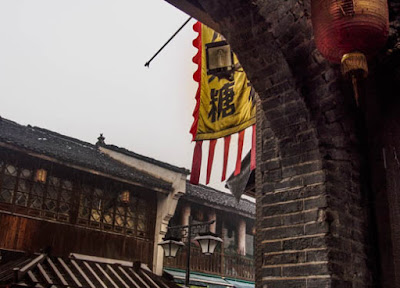As I meandered through the streets of Shuhe, I spotted a decorative gate through which more shops were located. The hand-painted red, yellow and black bowls caught my eye; these were not cheap-looking mass-produced touristic crap pieces. I felt compelled to enter the shop and look around. Shortly thereafter, a kind man from the store approached me and patiently showed me around, answering my many questions.
Joel Zheng was one of the people who ran the shop. Although there are many people in the Yunnan province who are also from the Yi ethnic group, he came from a smaller village in the Sichuan province and came to Shuhe hoping for a larger market.
The bowls and vases that had caught my eye were lacquer pieces. Lacquerware making of both utensils and art pieces dates back between 1,700 and 1,600 years in the Yi ethnic group. The pieces Joel had in his shop were made from Azalea wood, which grows well in the higher altitudes of his village.
The process of making the lacquer pieces is more complex than what the finished piece might initially appear to be. The bowls above show fourteen different stages. According to Joel, a bowl might take between 40-50 days, due to the number of stages and drying time. To my surprise, the bangles took 50-60 days - which helped explain why their prices were higher than I would have expected for a bangle.
Lacquer art in the Yi ethnic group is usually done by men. The brush bristle is made from the tail of a sheep. The background color is typically black, made from ash. It represents the earth, and may also symbolize dignity and decency. The red color, made from minerals, represents fire and connotes bravery and enthusiasm. Yellow is the third color typically used. Also made from minerals, yellow represents the sun and symbolizes beauty and brightness.
Designs are directly painted on the piece, without the use of stencils or even preparatory sketching. Such an approach requires many years of experience, practicing first on substandard pieces. Many of the patterns are derived from nature. One would find patterns representing nature items such as mountains, sun, waves, rivers, cocks combs, ferns, flowers, fires, fishnets, and the bull/cow eyes.
 |
| The swirls on this bowl represent the eyes of a cow |
 |
| Mouse over the image to see a few symbols |
The lacquer art of the Yi has been placed on the state-level Representative list of Intangible Cultural Heritage due to its unique process and cultural value.
Read more about the Yi lacquerware

















































